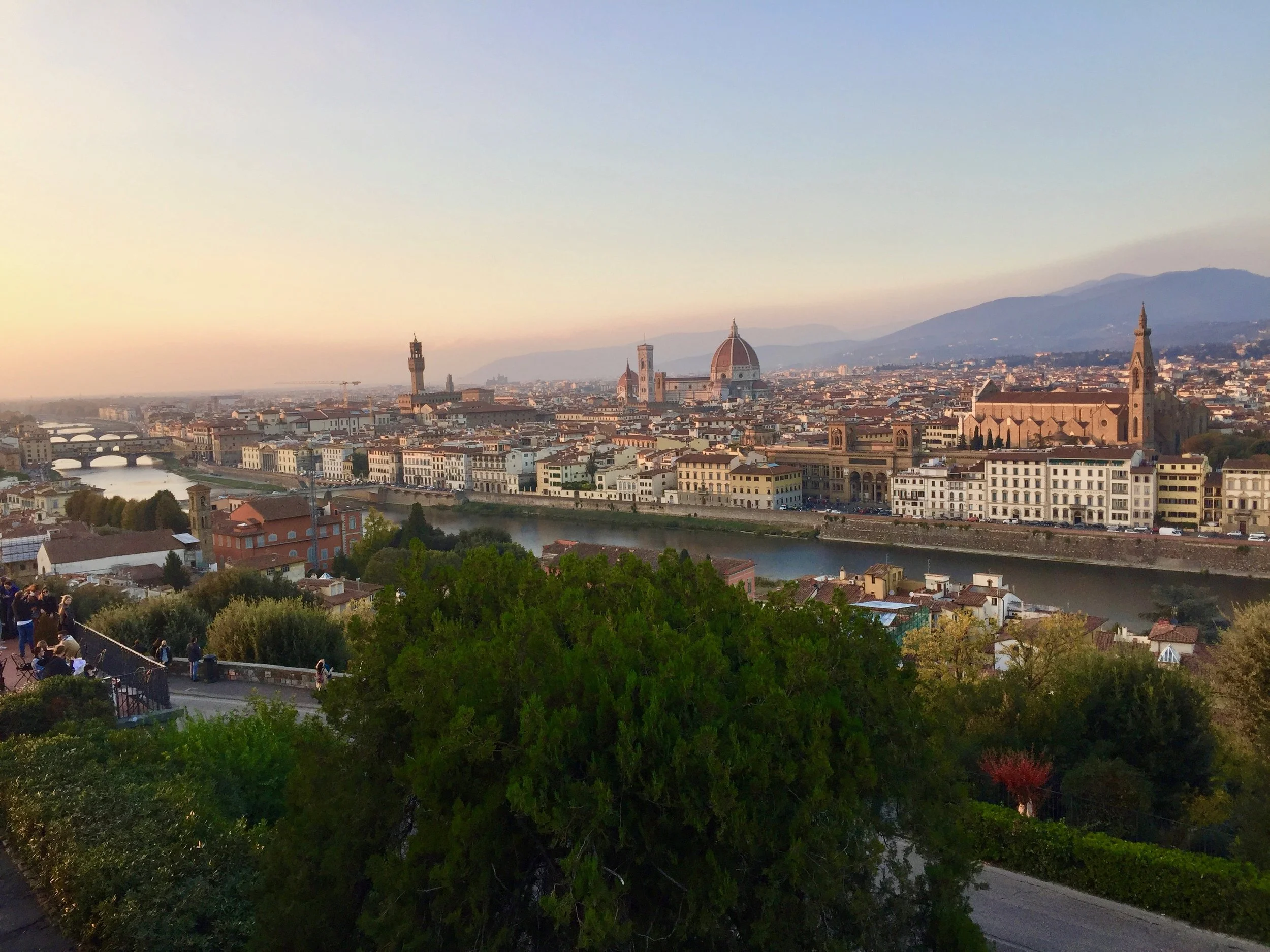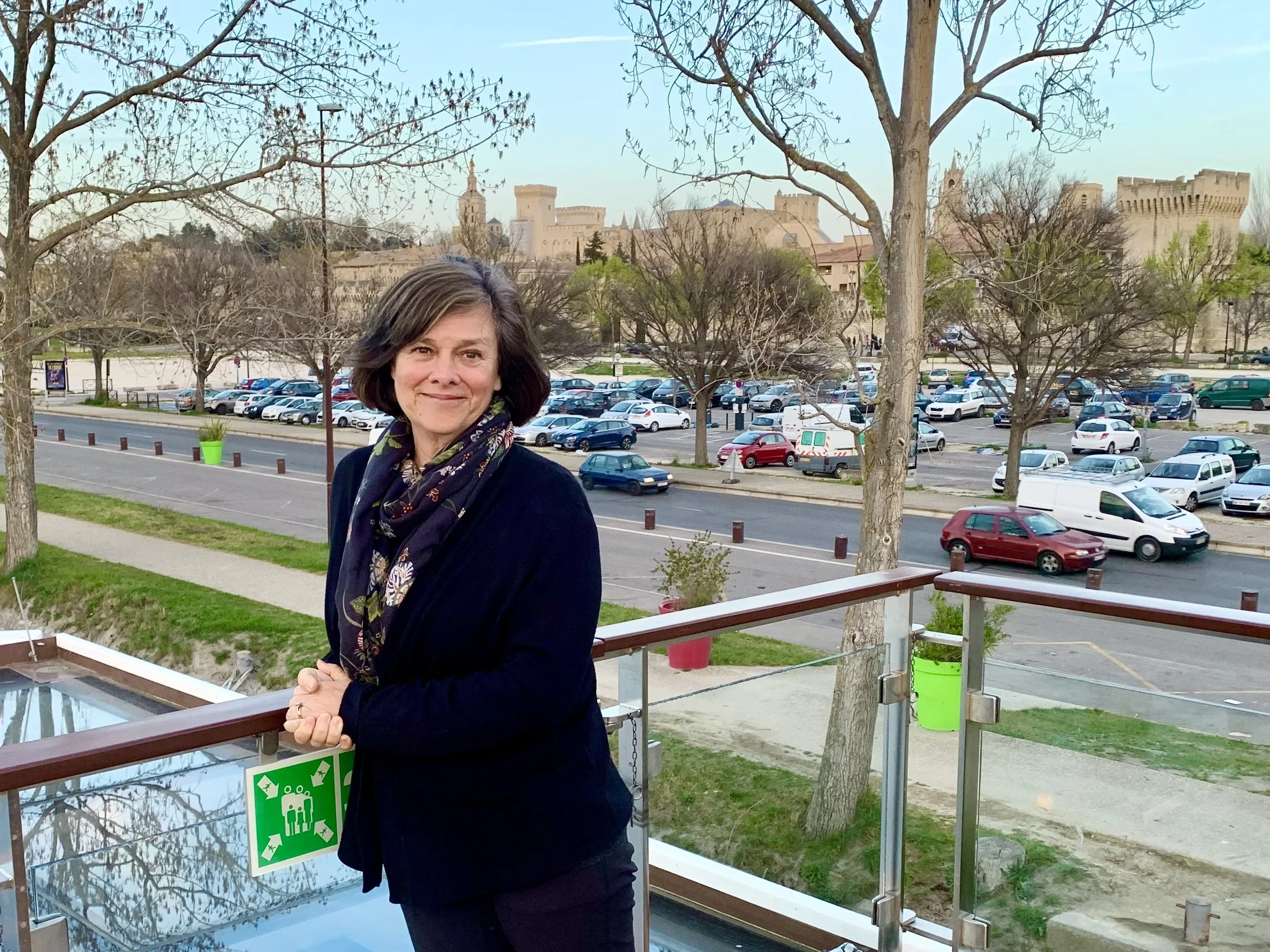One of our small group tour participants making another classic Tuscan dish, pici pasta!
We talk about food a lot on our blog because a) we love to eat and b) we feel that food tells you a lot about a place. Eating the food of a specific region can give you a little taste (pun intended) of the culture that it comes from.
As much as we love to travel, we can’t be everywhere at once. So when we get a hankering for Italy when we’re dog sitting in the UK, or reminiscing our hikes through the Tuscan Hills, our go to move is to cook one of our favorite Italian dishes. Today, in honor of the ETC Blog’s Tuscany month, we’ll be sharing a recipe for a classic Tuscan vegetable and bean soup called Ribollita. It’s simple to make, the ingredients are easy to find and inexpensive, and most importantly it’s absolutley delicious. Ribollita is the perfect thing to get you through these last few weeks of winter. Have a go at making it and if you find that your appetite for Tuscany has been whet, check out our small group tour to the region in May, when you can get your fill of Tuscan pasta, cheese, wine, history, scenery and more.
A Note on Tuscan Food
As is the case for many of the world’s great cuisines, a number of Tuscany’s most famous foods were born out of necessity. Several of the region’s iconic dishes were created by peasants who had to make use of what little they had on hand - typically bread and seasonal vegetables. For a long time, Tuscany was a very poor area, and therefore the people couldn’t afford to allow any food to get thrown away. Our Tuscan Wine Itinerary explored the best pairings, and you’ll notice that many dishes - including the soup we’re showcasing today - incorporate stale bread or other leftovers.
The beautiful countryside of Tuscany
What is Ribollita?
Ribollita is a hearty bean and vegetable soup that is thickened with stale bread. The name literally translates to “reboiled” as it was originally made by reheating leftover minestrone from the day before and tossing in some bread to beef it up. Some people believe that the dish has roots in the Middle Ages when servants would gather up their masters’ trenchers (bread used as a plate) and boil them for their own supper.
Ingredients for ribollita soup
How to Make Ribollita
Overall, Ribollita is an easy soup to make. It’s a great Tuscan dish to make at home. Most recipes will have you start with a simple soffritto (carrots, celery, and onions cooked in olive oil), then add in tomato in some form (usually paste or crushed whole tomatoes), liquid of some sort (vegetable stock, water, wine, liquid from cooking beans), tuscan kale, cooked beans, and finally, stale bread. Like any popular dish, ribollita recipes vary widely. Some use lots of tomato, while others just call for a bit of tomato paste. Many Tuscans would scoff at the idea of using canned beans, but I think it makes the soup a little more accessible for weeknights or busy evenings. If you do have some extra time, soaking and slowly cooking dried beans for this recipe will certainly add an extra layer of flavor. Some recipes call for a portion of the beans to be pureed, which does add a nice heft and thickness to the soup, but I feel that the bread does that on it’s own. If you have some extra time or would like to make the Ribollita in advance, throwing it in the fridge overnight will help the soup to thicken even more and allow the flavors to meld.
Delicious Ribollita soup, perfect for getting you through the last few weeks of winter.
Our Ribollita recipe is not entirely authentic (for example, classic Ribollita wouldn’t be served with cheese...but cheese is delicious!) and I’ve taken a few shortcuts to make this a little easier to throw together on a busy weeknight, but it uses many classic Tuscan techniques and ingredients. The vegetables I use vary based on seasonality and availability, so if you don’t have the exact greens or beans we’re calling for, don’t worry - feel free to use what you have on hand. I think you’ll find this Ribollita to be simple, hearty, and delicious! As a bonus, this soup is vegan if you leave out the cheese (making it a favorite of mine for meatless Monday); but if you’re an omnivore, you can replace the veg stock with chicken stock and stir in some browned Italian sausage at the end.
Recipe for Ribollita
Ingredients
1/4 cup, plus 2 tablespoons olive oil
1 large onion, diced
3 large carrots, diced
3 stalks celery, diced
12 cloves garlic
2 tablespoons tomato paste
2 15oz cans whole peeled tomatoes
1 15oz can cannellini beans
1 15oz can butter beans
1/2 head of savoy cabbage
1 bunch Tuscan kale (cavolo nero)
4 cups vegetable stock
1 cup white wine
1/2 loaf crusty bread
1 small bunch parsley
1 chunk of parmesan cheese, grated, rind reserved
Salt and pepper (to taste)
Red pepper flakes (to taste)
Preheat the oven to 400° F.
Heat 1/4 cup olive oil in a large, heavy bottomed stock pot or dutch oven until hot but not smoking. Add diced vegetables, season with a pinch of kosher salt, and sauté, stirring occasionally until the onions are translucent (about 10 minutes).
Meanwhile, smash 8 garlic cloves with the side of a chefs knife, remove skin, and roughly chop. Add the garlic to the pot and stir, until the garlic is fragrant (about 2 minutes).
Add the tomato paste to the vegetables and cook until it’s taken on a darker color and is quite thick. Meanwhile, strain the canned tomatoes, reserving the juice. Gently press the tomatoes against the strainer with a wooden spoon to break them up slightly.
Deglaze the pan with half of the wine, then add the strained, lightly crushed tomatoes to the pot and cook, stirring occasionally, until the tomatoes are cooked through and have caramelized slightly (about 10 minutes).
While the tomato is cooking, tear the loaf of bread into roughly 1 inch pieces. Smash remaining 4 cloves of garlic with the side of your knife, remove the skin, and finely mince. Toss 2/3 of the bread with 2 tablespoons olive oil, the minced garlic, and salt, then spread it out into a single layer on a large baking sheet. Pop it into the oven and bake until golden brown and crunchy (15-20 minutes).
Strain and rinse both cans of beans then add them to the pot along with the stock, reserved tomato juice, parmesan rind*, the rest of the wine, salt, pepper, and crushed chili flakes. Bring to a simmer.
As you’re waiting for the soup to come to a simmer, strip the tuscan kale off of it’s ribs and tear it into (roughly) 2 inch pieces, then thinly slice the savoy cabbage. Add the greens to the soup in two additions, allowing them to wilt down in between, followed by the remaining torn bread. Simmer until thickened (about 10 minutes).
Wash, dry and roughly chop your parsley while you’re waiting, and pour yourself a well earned glass of wine (or, if you’re like me, a second or third glass of well earned wine).
Ladle the soup into bowls and top with cheese, croutons, and parsley. Take a bite and picture yourself enjoying your ribollita among Tuscany’s beautiful rolling hills!
*NOTE: The parmesan rind adds a lovely, rich umami flavor to the stew. Be sure to remove it before serving. If you’d like to make the soup vegan, try adding some nutritional yeast for a similar flavor.
If you’d like to go straight to the source for your ribollita, join us in Tuscany from May 11-18 on our small group tour! The tour is capped at just 10 guests. We’ll stay at a private villa, taste Brunello wine at one of the best wineries in the region, visit a sheep farm to taste pecorino cheese, explore picturesque hill towns with local guides, and much more!
Are you planning a trip somewhere in Europe? We can help with that! Remember that we are always available to you and your friends and family for custom trip planning to Europe. We also still have spots available on our small group trip to Tuscany in May and our small group trip to Piedmont in October 2019! Would you like to join us? Feel free to reach out via email — I'm always available to talk about travel!!
Love this post? Pin it so you can come back to it later!
Chelsea is one third of the Euro Travel Coach team (and is the daughter of the other two thirds of the team, Greg and Betsy). She has a passion for food and wine and has a background in hospitality. She attended Cornell University's School of Hotel Administration and interned with two of New York City's best restaurant groups while she was in school. After graduation she worked at the number one wine auction house in the United States, Chicago's Hart Davis Hart Wine Co. There, she organized various wine centric events for HDH's most valuable clients. She and her husband moved to Copenhagen, Denmark in 2016 and then to Bristol, UK in 2018 and traveled through Europe extensively during their time living abroad. Her expertise in food and wine and her experience living in Europe helps her to find amazing accommodations, delicious restaurants, and unique experiences for Euro Travel Coach clients.



















When you are Planning a trip to Europe, or Planning a trip to France, you may want to include Paris. Follow this Outstanding 4-Day Paris Itinerary for an amazing experience. Use this guide to make the most of your time in Paris, the City of Lights.